The Best Plants for Bees: Creating a Buzz in Your Garden
Bees are nature’s master pollinators. Without them, our gardens would lack vibrant splendour, and our plates would miss out on various fruits and vegetables. Today, these vital insects are facing unprecedented challenges, but gardeners can play a crucial role in supporting their populations. By cultivating the right flora, you can transform your garden into a haven for bees.
Here’s how to sow the seeds of sustenance for our buzzing friends!
Why Are Flowers Important for Bees?
Bees depend on flowers for two critical resources: nectar and pollen. Nectar, a liquid rich in sugars, fuels bees with energy, while pollen provides them with protein and fats. As bees move from flower to flower, they inadvertently transfer pollen among them, aiding plants in reproduction. This exchange is essential for the ecosystem, contributing to a robust and diverse environment.
Best Bee Plants to Adorn Your Garden
When selecting plants for your garden, consider the following bee-friendly options renowned for their allure to bees.
- Lavender (Lavandula)
Lavender is not just popular among humans for its fragrance and soothing properties; it’s a bee magnet too! Its long blooming season and rich nectar stores make it a garden staple. Best planted in April/May. Avoid planting in winter!
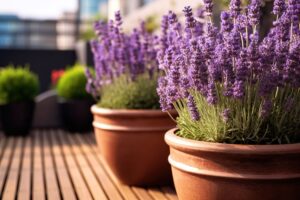
- Borage (Borago officinalis)
Also known as a “bee’s bread,” borage is a powerhouse for pollinators. The star-shaped flowers produce nectar even after the bees visit, ensuring a constant food supply. Best planted in April/May although can be planted anytime when the soil is not likely to be frozen or waterlogged.
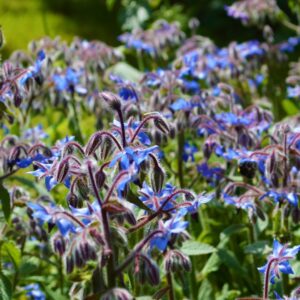
- Rosemary (Rosmarinus officinalis)
Rosemary’s blue flowers offer a feast for bees early in the year when sources are scarce. It’s a win-win situation, as the plant is also great for cooking. Best planted during Spring, although anytime in mild weather. Avoid planting in hot spells. Water well!
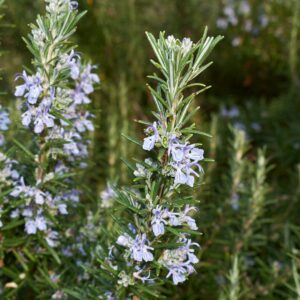
- Sunflower (Helianthus annuus)
A giant among garden flowers, sunflowers boast abundant pollen and nectar. They are particularly attractive to bees who prefer flat, open flowers. Plant straight into the ground in April or May. A great plant for the children to get involved in as they are easy and fun to grow!
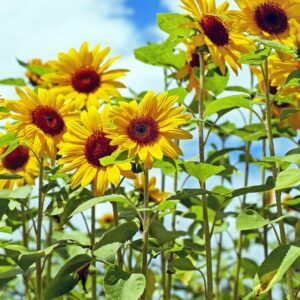
- Echinacea (Coneflower)
With their prominent, spiky centres and wide petals, coneflowers are ideal landing platforms for bees. Plus, they contribute to a striking visual display in any garden. Put these in the soil during Spring when all sign of frost has gone.
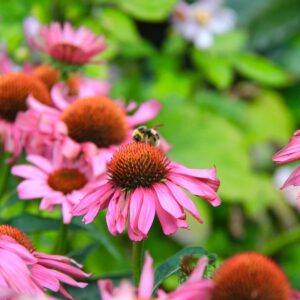
- Bee Balm (Monarda)
True to its name, bee balm is irresistible to bees. The peculiar shape of its flowers offers an exciting foraging ground for these insects. We recommend you plant them during Spring and kept well watered!
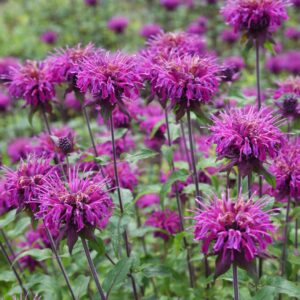
- Buttercup (Ranunculus)
The glistening yellow flowers of buttercups are like liquid sunshine for bees. Their bright display is not just beautiful but also very effective at attracting pollinators. Plant during early Spring in well drained soil for best results.
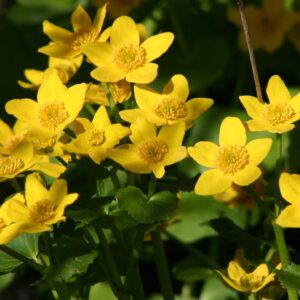
- Foxglove (Digitalis)
Foxglove’s bell-shaped flowers are perfect for bumblebees, who can easily fit inside to access the nectar and pollen. You should plant in either Spring or Autumn when the soil is warm. Water regularly!
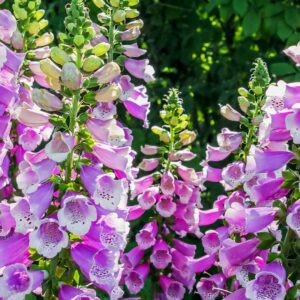
- Zinnia (Zinnia spp.)
Zinnias come in a dazzling array of colours and provide a plentiful pollen buffet all through the spring and summer months. Does well when planted May-June when the days and evenings are warm. Alternatively you can plant them undercover in April-May and then move outside once the weather improves.
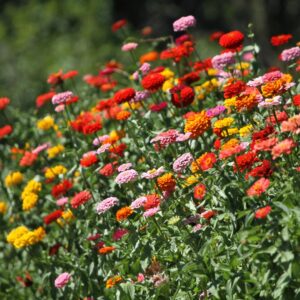
- Agastache (Hyssop)
With its dense spikes of flowers, Agastache is a long-lasting perennial that will keep the bees coming back for more. Plant during Spring when the last frost has past.
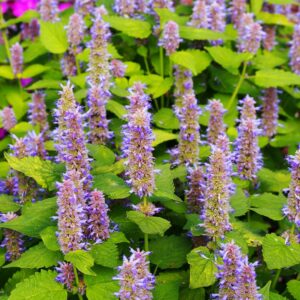
In the end, cultivating a garden lush with bee-friendly plants isn’t just a visual treat. It’s a profound contribution to the environment, supporting bee populations that are essential for pollination and biodiversity. Whether you’re a seasoned gardener, an environmental advocate, or someone who simply adores bees, by planting the right flowers you’re investing in the health of our ecosystem. Put down roots for the future—one flower at a time!
Remember, while you’re busy growing a paradise for bees, be sure to use pesticide-free practices to keep your garden safe and nurturing for your tiny visitors.
If you discover bees in your property that are causing a nuisance or inconvenience to you all the public we are able to help! Beesaway physically remove them alive and place them back here in the Suffolk countryside. To find out more you can follow the following link – Honey Bees In Buildings
If you discover a pest problem whilst gardening our sister company is able to help. Covering all pest control services across Essex, Suffolk and Cambridgeshire. You can find out more information here – http://www.eraserpest.com

